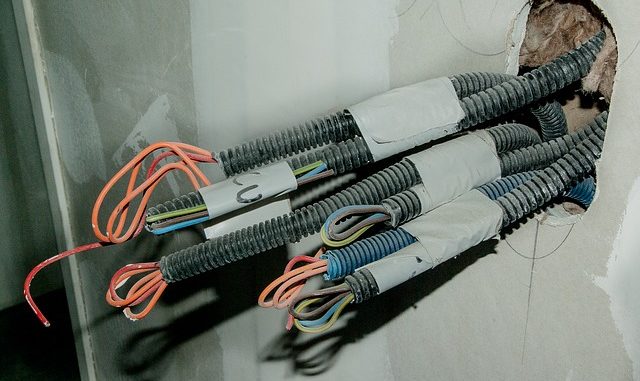
Residential house wiring should offer the capacity to efficiently and safely supply the entire house with electricity. In addition, it should adhere to relevant electrical codes to ensure safety in regard to electric shocks and fires.
Electrical codes provide a design for standard wiring systems that qualified electrician will readily understand. They specify the type and size of cables, parts, spacing of electrical outlets, grounding, protection. Only authorized people should carry out the wiring design.
Why you should use a licensed, qualified electrical contractor
Just like all other electrical work, qualified and licensed workers must perform residential house wiring. If a new installation, the utility company will not connect their power if the wiring was done by unauthorized workers. And, there exist so many risks associated with poorly installed wiring.
Incorrect wiring may lead to fires, accidents, malfunctions and other undesirable effects. To make matters worse, your insurance company may not honor claims from damages.
Electrical service panel and equipment
These include the main electrical panel, the meter base, entrance conductors, circuit breaker and other hardware required to safely supply the entire house. All the electricity in the house is usually fed through the meter and feeder panel breaker. Install only one service, typically a minimum of 100Amp, for a single family dwelling. The size of the service entrance and feeder must, therefore, ensure sufficient power to the entire home.
Owners of older homes with 60 Amp systems may upgrade the service, and sometimes the panel, to increase capacity and the number of circuits. With the help of a qualified electrician, it can be cheaper to add a sub panel to accommodate the additional capacity and circuits.
Electrical panel location and wiring
The service panel location and installation are governed by electrical codes. Typically, it should be easily accessible, while out of the reach of children. The ideal place should have enough working room and adequate illumination.
The owner should be able to access it and perform simple tasks such as replacing a fuse or resetting a breaker. However, owners should consult an electrician for all other tasks.
Branch circuits in residential house wiring
There are instances where NEC and other regulators recommend dedicated circuits for certain loads. Typical loads to put on individual branch circuits include sensitive electronic equipment such as computers. In addition, water heating systems, large appliances, and other high capacity loads that zap power require a dedicated circuit.
Run cables all the way to the main service panel and avoid connecting to other existing circuits. The same conductor size should be used throughout the branch circuit.
Electric water heaters, HVAC equipment, hot tubs and other appliances should each have a nearby disconnect that is easily visible and accessible. The power disconnect can be provided by the main or sub panel breaker, a dedicated switch, or a power cord that can be unplugged.
Typical branch circuit ratings
The branch circuits should have adequate current carrying capacity, adequate and grounding.
Typical branch currents include:
- 15 amps for simple circuits
- 20 amps for kitchen receptacles and 20 amp equipment
- 30 amps for AC units, water heaters, etc
- 30 amps for clothes dryer and other 30 amp combo equipment
- 50 amps for washers, dryers, refrigerators, ovens and other 50 amp appliances
- 65 amps top combo oven/refrigerator and other 60 amp combo appliances

